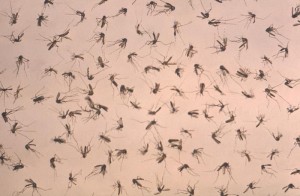Dengue Prevention Strategy
1. Reduce mortality by 50% by 2020 – by early detection and prompt treatment of cases through training of healthcare personnel
2. Dengue morbidity can be reduced to 25% by 2020– by implementing improved outbreak prediction and detection through coordinated epidemiological and entomological surveillance; promoting the principles of integrated vector management and deploying locally-adapted vector control measures including effective urban and household water management. Effective communication can achieve behavioural outcomes that augment prevention programmes.
3. Investment in dengue preparedness and response, including risk assessment and mapping, stockpiling and logistics, surveillance and diagnostic capacity, behavioural and social interventions, and risk communication are all essential not only for early outbreak detection and rapid response, but also for implementing the IHR (2005) requirements to manage acute public health events.
4. Estimate global burden of dengue by 2015. A better estimate of the true burden of the disease needs to be addressed as a priority. Improved surveillance and the training to support it should be supported.
Priority Areas for Planning Dengue Emergency Response
• Establish a multisectoral dengue action committee
• Formalize an emergency action plan
• Enhance disease surveillance
• Perform diagnostic laboratory testing
• Enhance vector surveillance and control
• Protect special populations and reduce the impact of environmental determinants
• Ensure appropriate patient care
• Engage the community and relevant professional groups about dengue control as well as their participation in dengue prevention and control
• Manage the mass media
Three Primary Interventions for Effective Malaria Control
• diagnosis of malaria cases and treatment with effective medicines;
• distribution of insecticide-treated nets (ITNs), more specifically long-lasting insecticidal nets (LLINs), to achieve full coverage of populations at risk of malaria; and
• indoor residual spraying (IRS) to reduce and eliminate malaria transmission.
Risk Indicators
• mosquito breeding sites (i.e. household water storage containers, poor urban water drainage) and appropriate environmental control measures that are associated with lower mosquito indices (i.e. tightly fitting water storage lids, presence of fish or other biological control measures, and regular cleaning containers .
• sentinel sites should be established and age stratified
Seroprevalence and burden of disease(including economic costs) studies should be initiated.
Serotype changes should be monitored continuously.
 howMed Know Yourself
howMed Know Yourself





